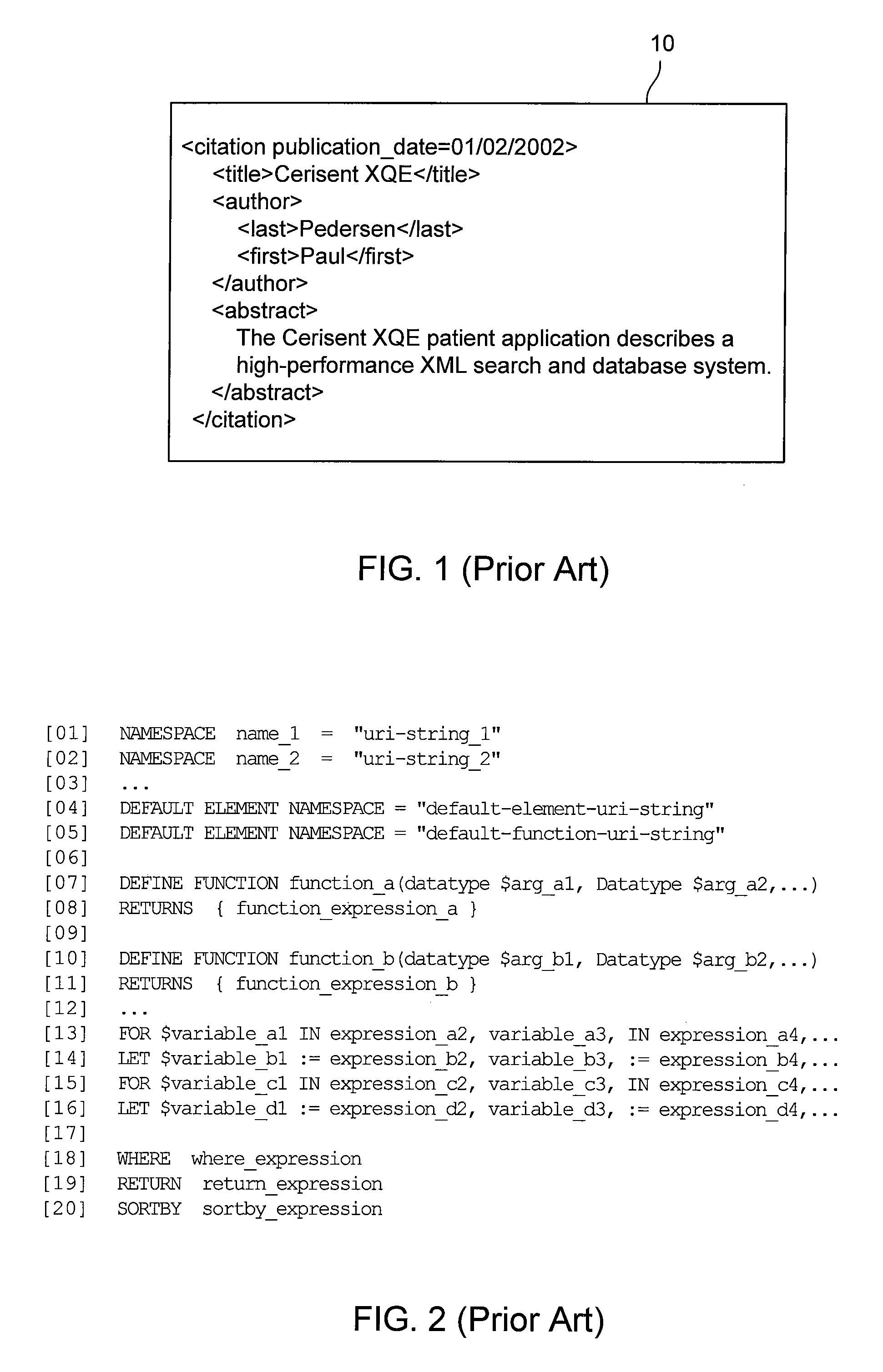XML Database Mixed Structural-Textual Classification System
a classification system and database technology, applied in the field of xml database mixed structural textual classification system, can solve the problems of inability to properly analyze certain data, often needed data quality,
- Summary
- Abstract
- Description
- Claims
- Application Information
AI Technical Summary
Benefits of technology
Problems solved by technology
Method used
Image
Examples
Embodiment Construction
[0037] This detailed description illustrates some embodiments of the invention and variations thereof, but should not be taken as a limitation on the scope of the invention. In this description, structured documents are described, along with their processing, storage and use, with XML being the primary example. However, it should be understood that the invention might find applicability in systems other than XML systems, whether they are later-developed evolutions of XML or entirely different approaches to structuring data.
Overview
[0038] Systems for generating and managing XML databases are described in Lindblad I-A. The nodes may be of any type, such as element nodes, attribute nodes, text nodes, processing instruction nodes or comment nodes. The notation u(n) is used herein to indicate an update operation u applied to the node n. “Elements” are generally understood in the context of XML documents, but would also apply where the data being manipulated is other than XML documents...
PUM
 Login to View More
Login to View More Abstract
Description
Claims
Application Information
 Login to View More
Login to View More - R&D
- Intellectual Property
- Life Sciences
- Materials
- Tech Scout
- Unparalleled Data Quality
- Higher Quality Content
- 60% Fewer Hallucinations
Browse by: Latest US Patents, China's latest patents, Technical Efficacy Thesaurus, Application Domain, Technology Topic, Popular Technical Reports.
© 2025 PatSnap. All rights reserved.Legal|Privacy policy|Modern Slavery Act Transparency Statement|Sitemap|About US| Contact US: help@patsnap.com



